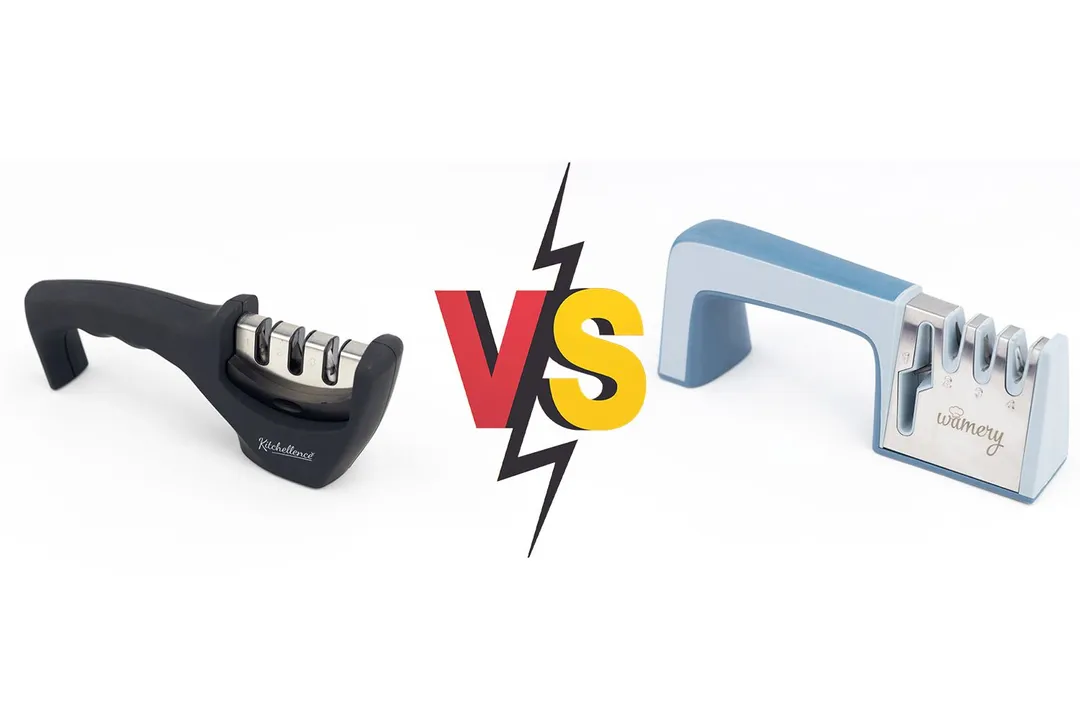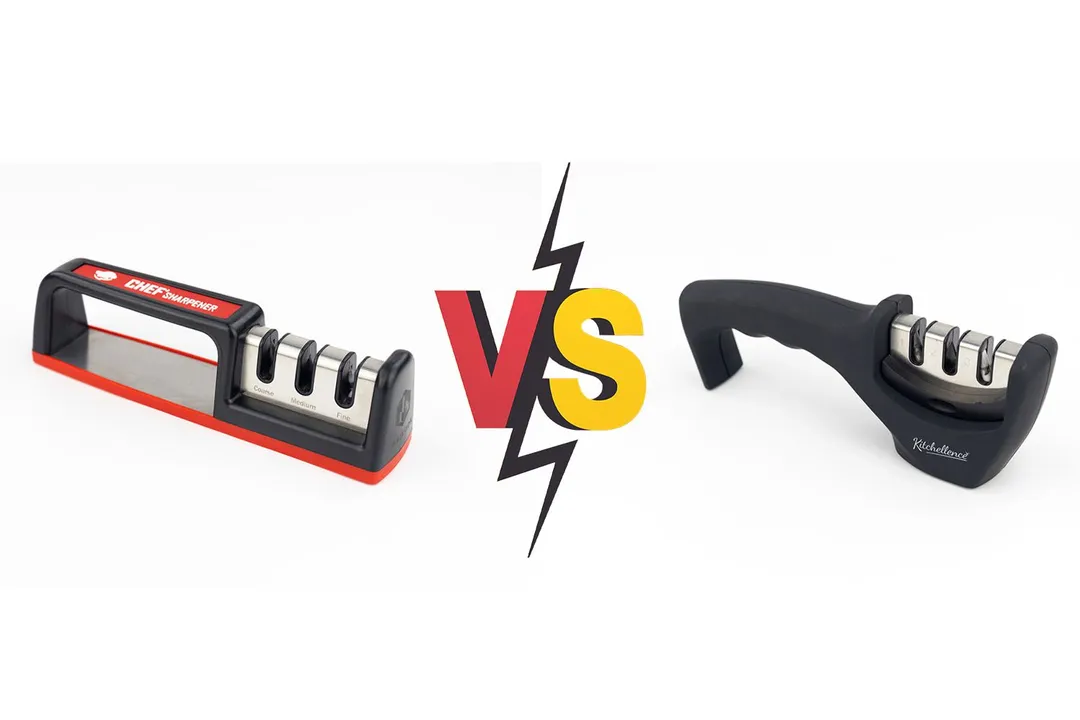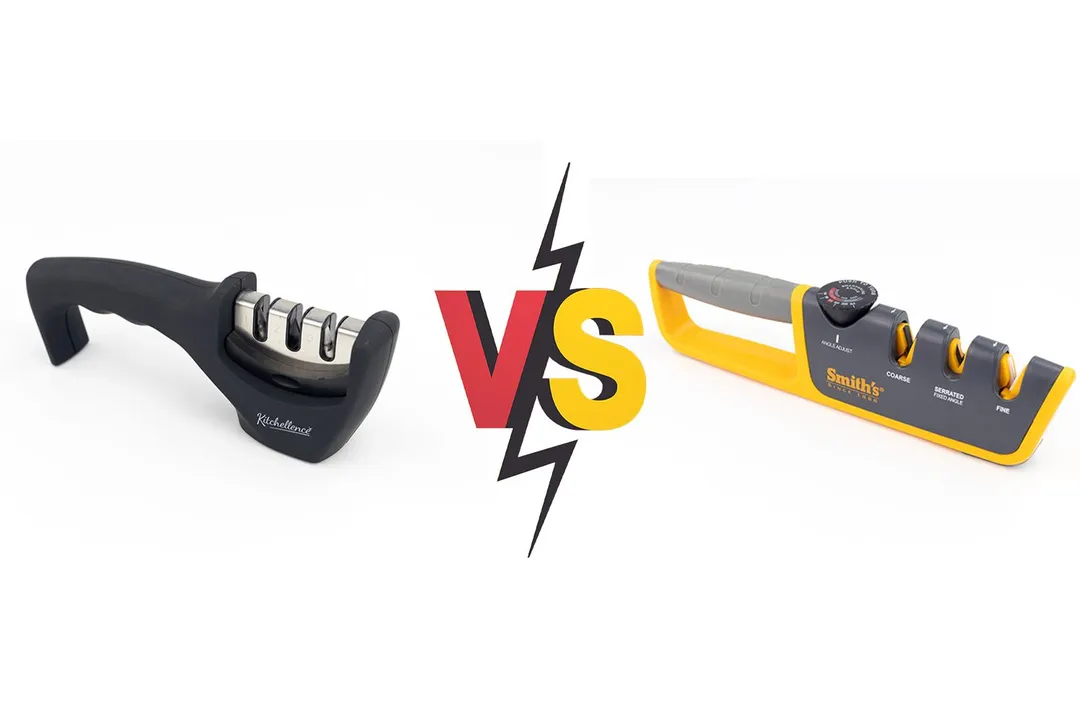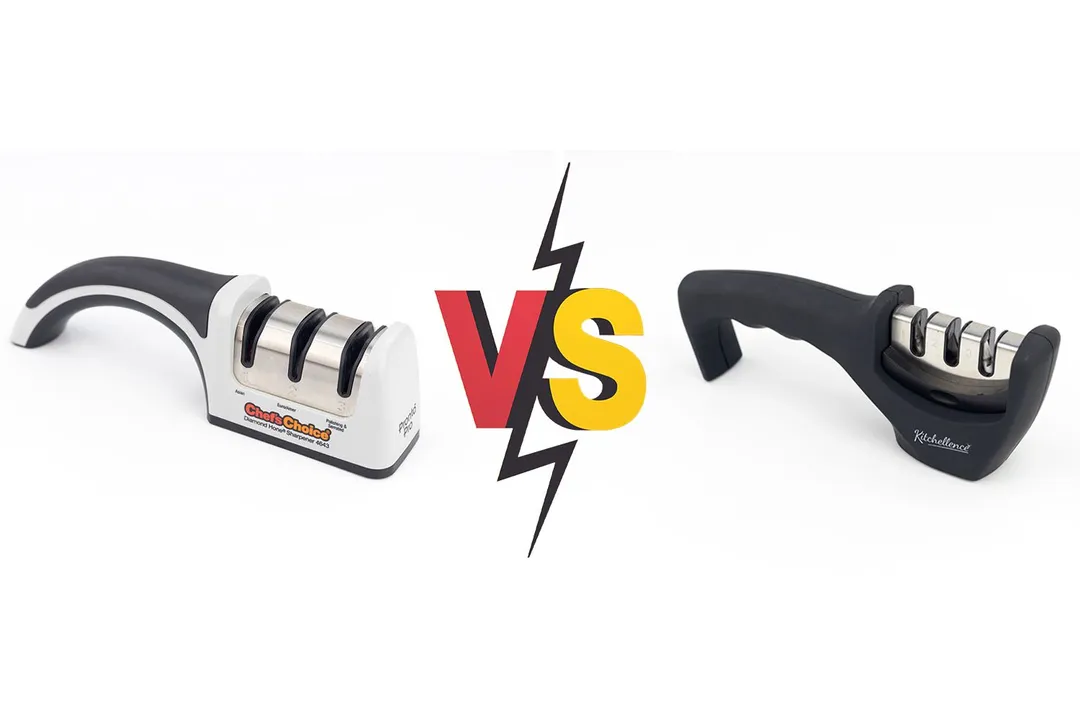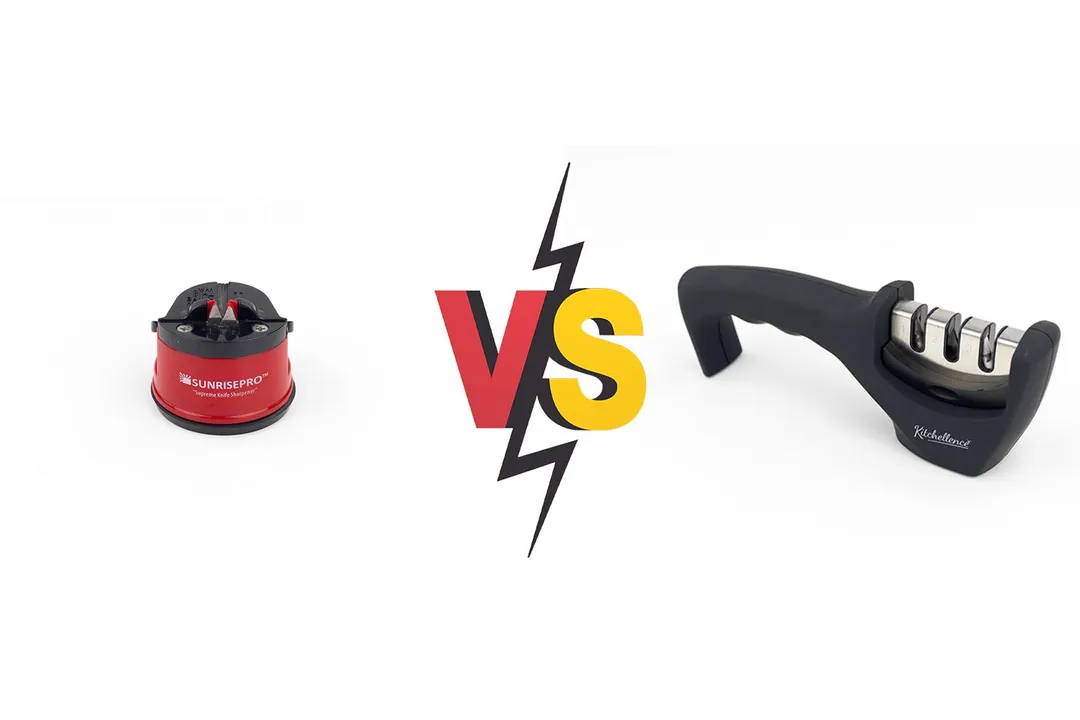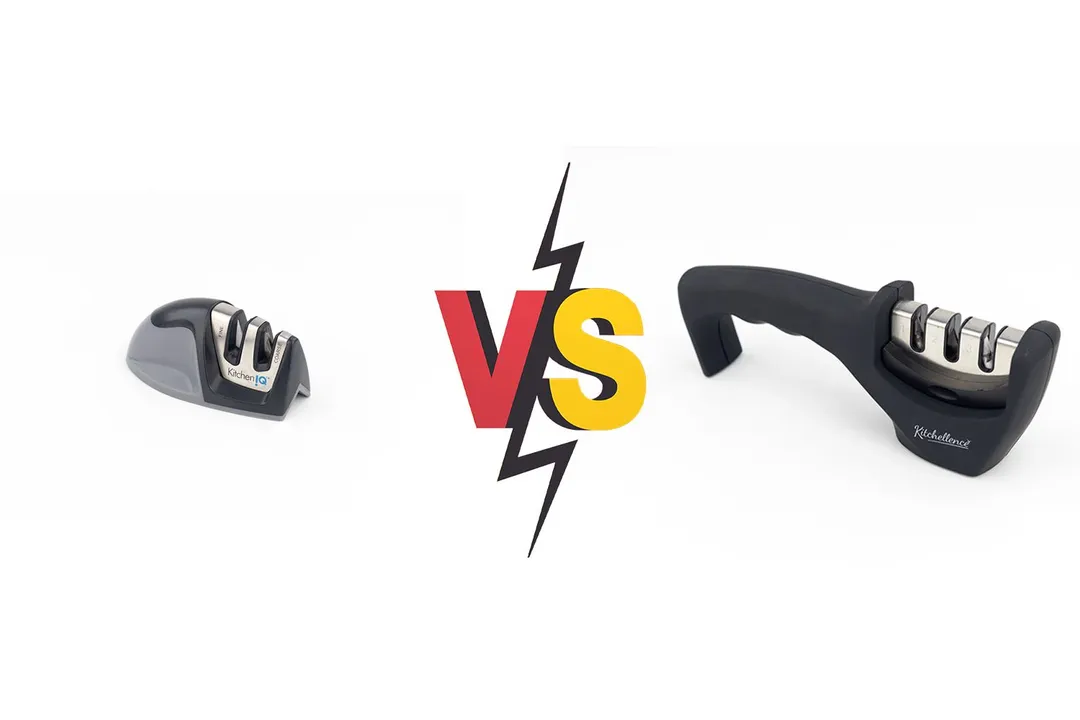Our recommendations are made independently through Research & Testing. We may receive commissions from purchases made via our links.
Amesser A-65 vs Kitchellence 3-Stage Manual Sharpener Side-by-Side Comparison
We tested how the Amesser A-65 performed against the Kitchellence 3-stage sharpener. Here are our results and analysis.
Amesser A-65
Tested Using Methodology v1.1Kitchellence 3-Stage
Tested Using Methodology v1.1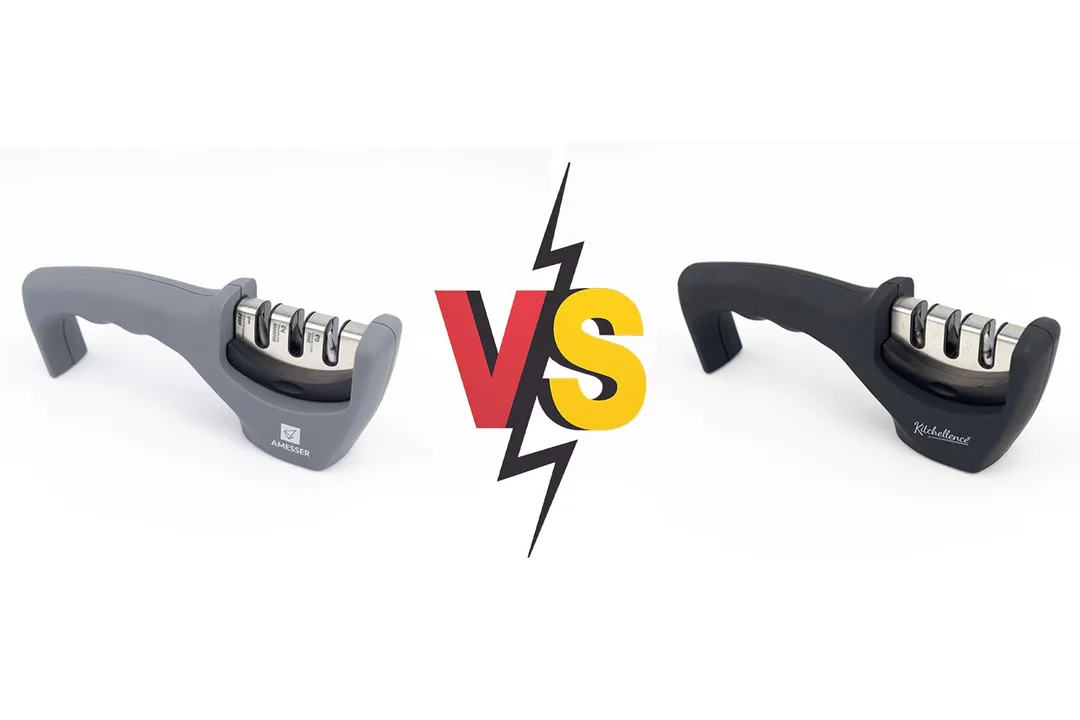
Overall Verdict
Without the brand names printed on the products, we wouldn’t be able to tell the Amesser A-65 and the Kitchellence 3-stage sharpener apart. In fact, they received equal ratings for design and ease of use. The Kitchellence, however, stood out when it came to actual performance.
Both sharpeners are made with quality materials and boast a robust build with a weighted, though tapered, base and ergonomic grip. They have identical slots in their working sections, with substantial sharpening rods.
It’s not surprising that the two took roughly the same amount of time to sharpen a knife and achieved the same level of keenness in our maximum sharpness test. The Amesser seemed more aggressive to the knife’s edge, though: It removed a lot more material and also left a much rougher edge compared to the Kitchellence, hence the lower performance rating.
It might have been a matter of individual products but as far as our testing went, the Kitchellence proved to be the better of the two.
Pros & Cons
- Affordable
- Instinctive and easy to use
- Well-built with a solid design
- Grippy and comfortable handle
- Safety glove included
- Easy to use, intuitive design
- Soft, comfortable finish
- Extra weight near the base for stability
- Affordable price
- Included glove for added safety
- Tapered base
- High center of gravity
- Tapered base
- Awkward base pad
Key Specs
Where to Buy
*You help support HealthyKitchen101's product testing and reviews by purchasing from our retail partners.
Analysis and Test Results
Performance
Sharpening Time to Cut a Lemon
Material Retention



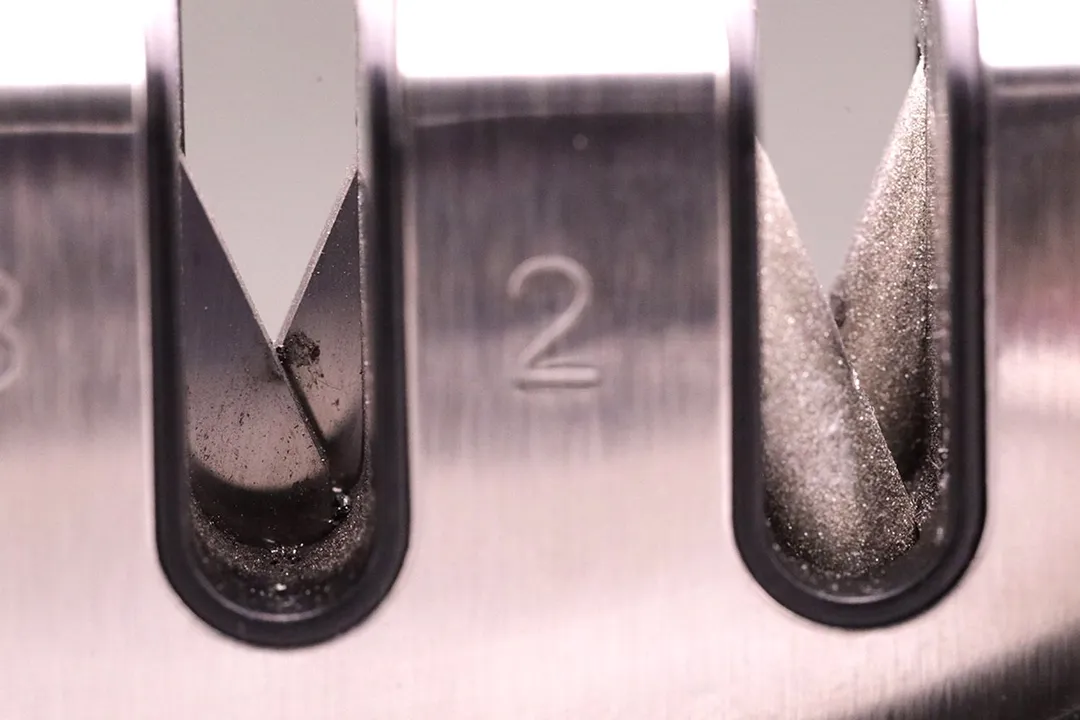

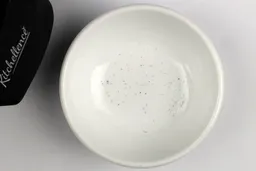
Maximum Sharpness Achieved
Edge Smoothness

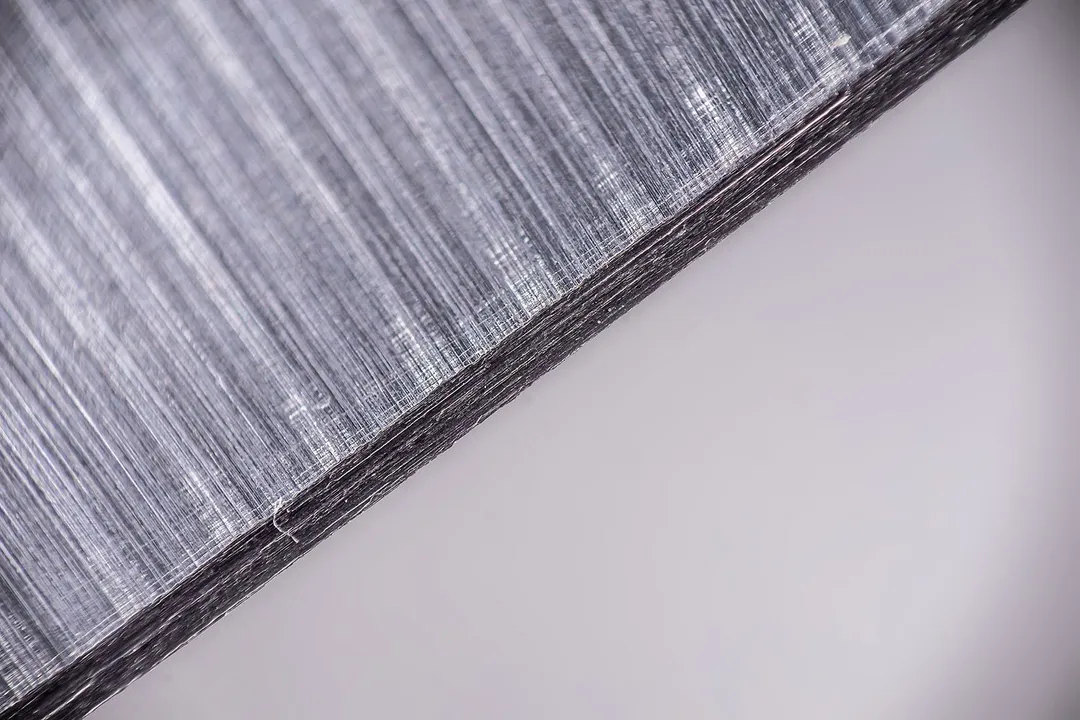
Design
In the Box

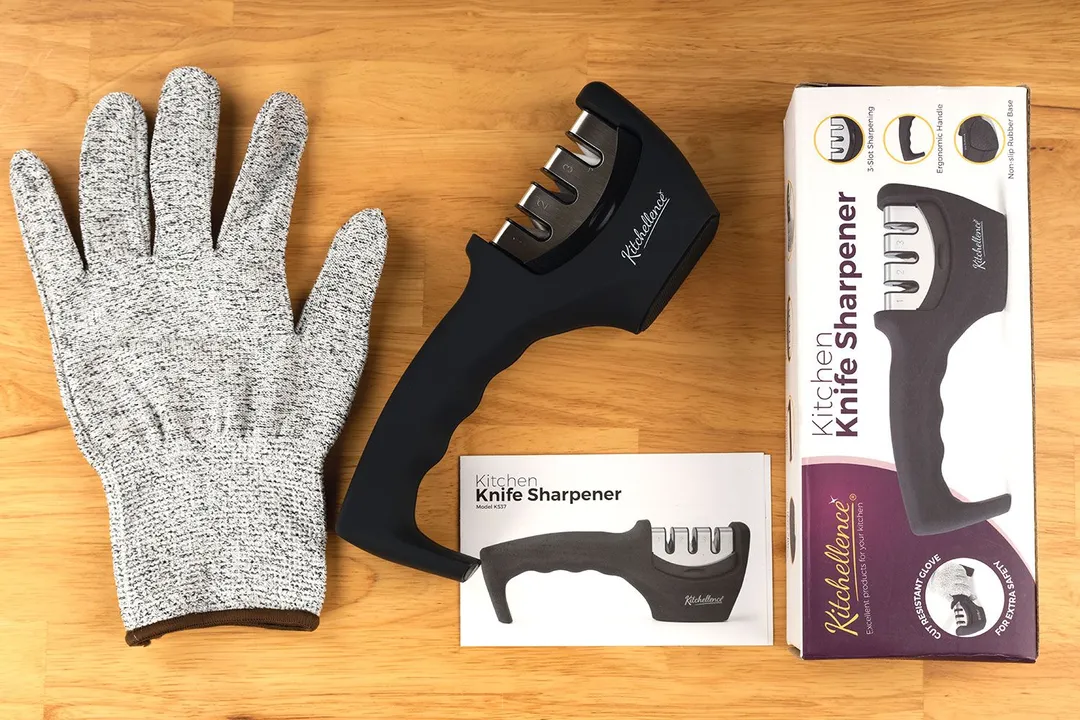
Dimensions
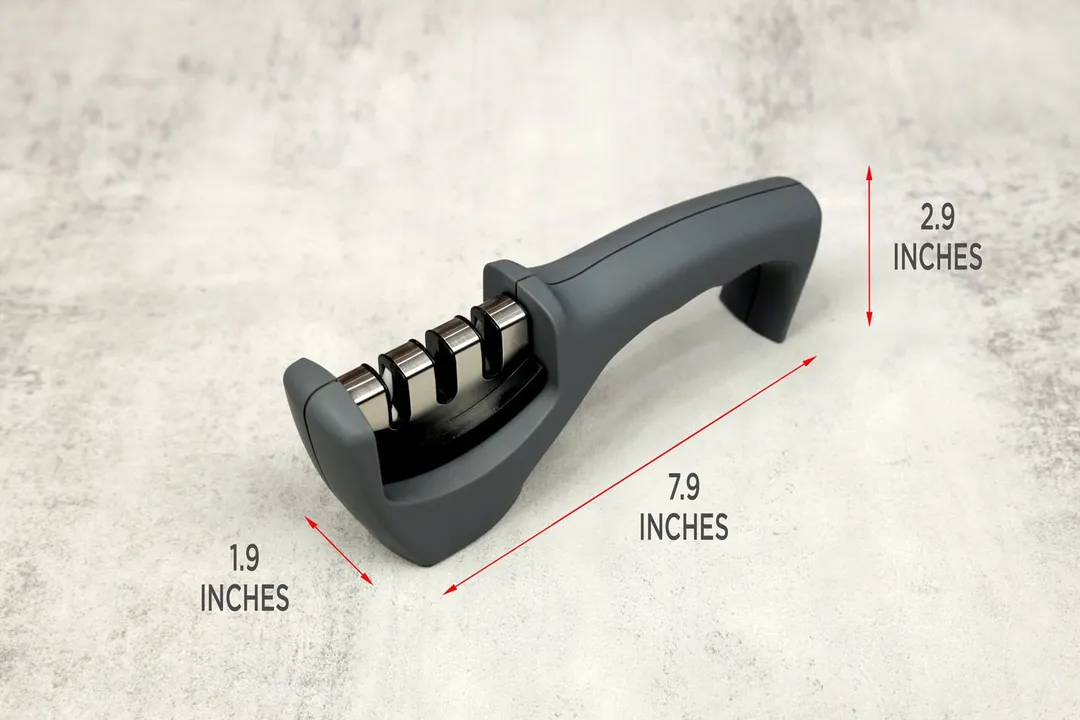
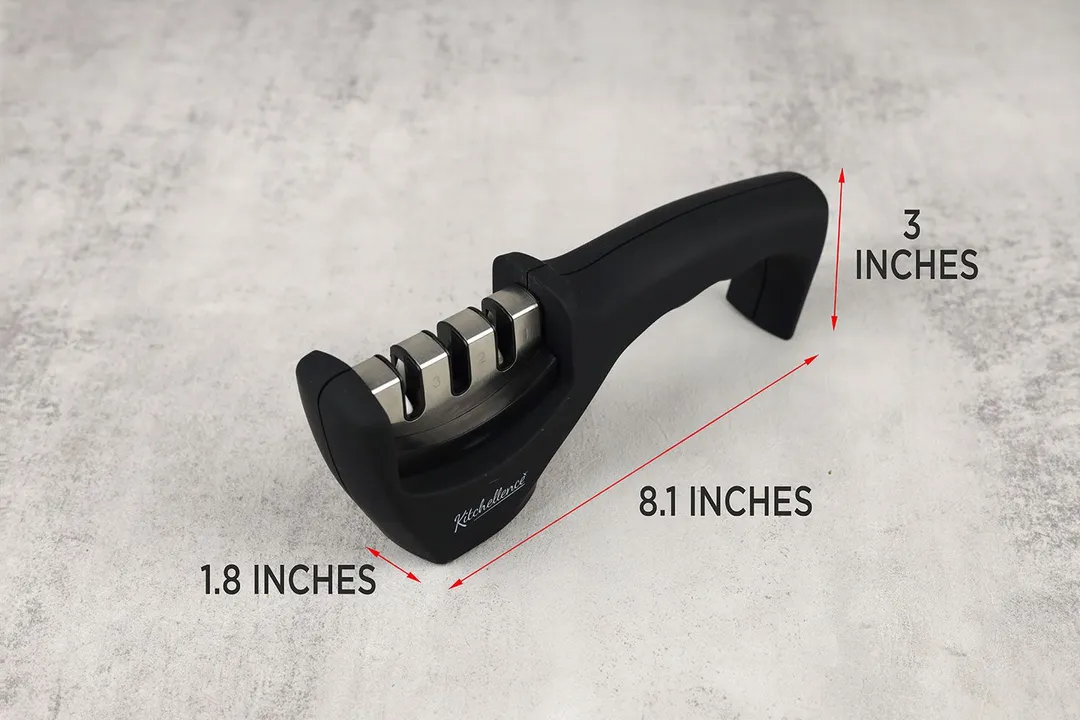
Build Quality
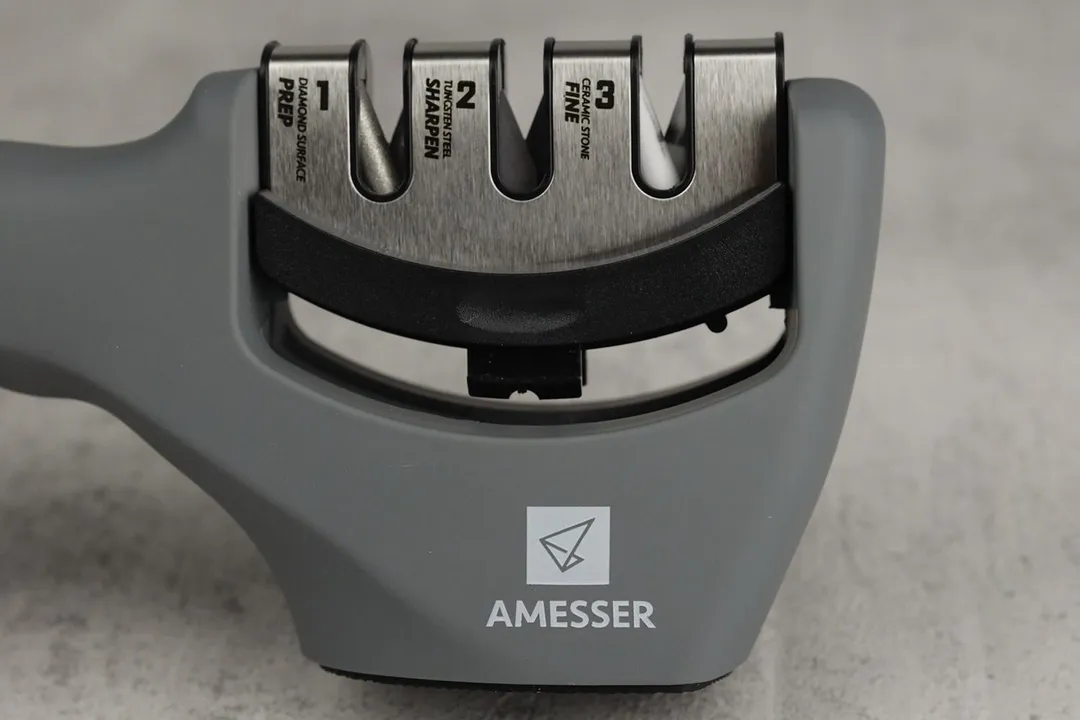
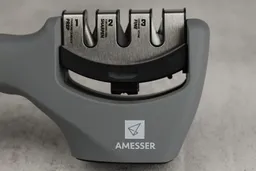
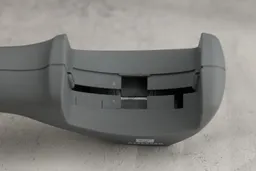
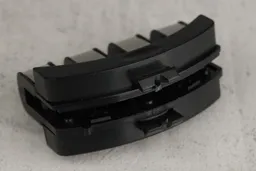
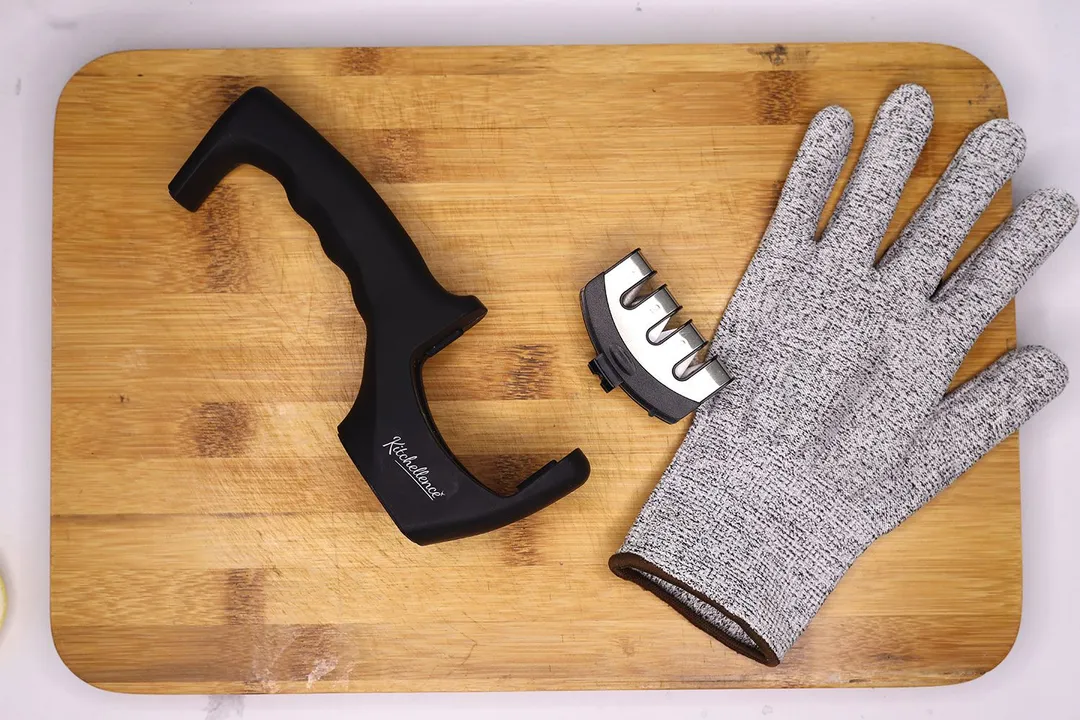
Working Section
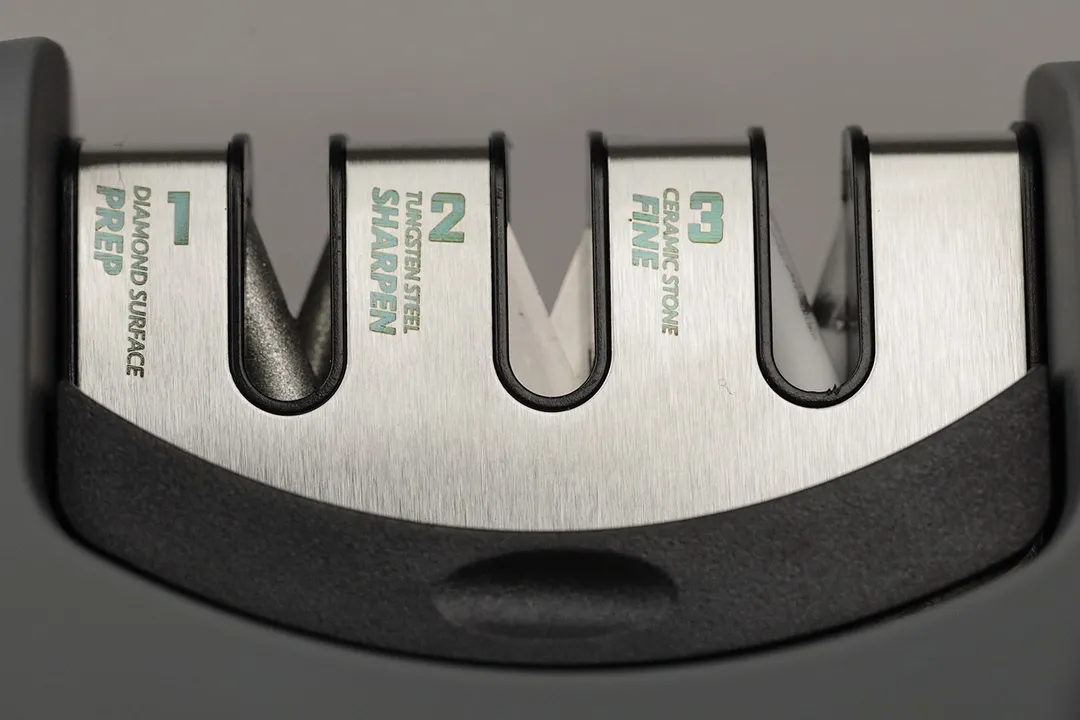
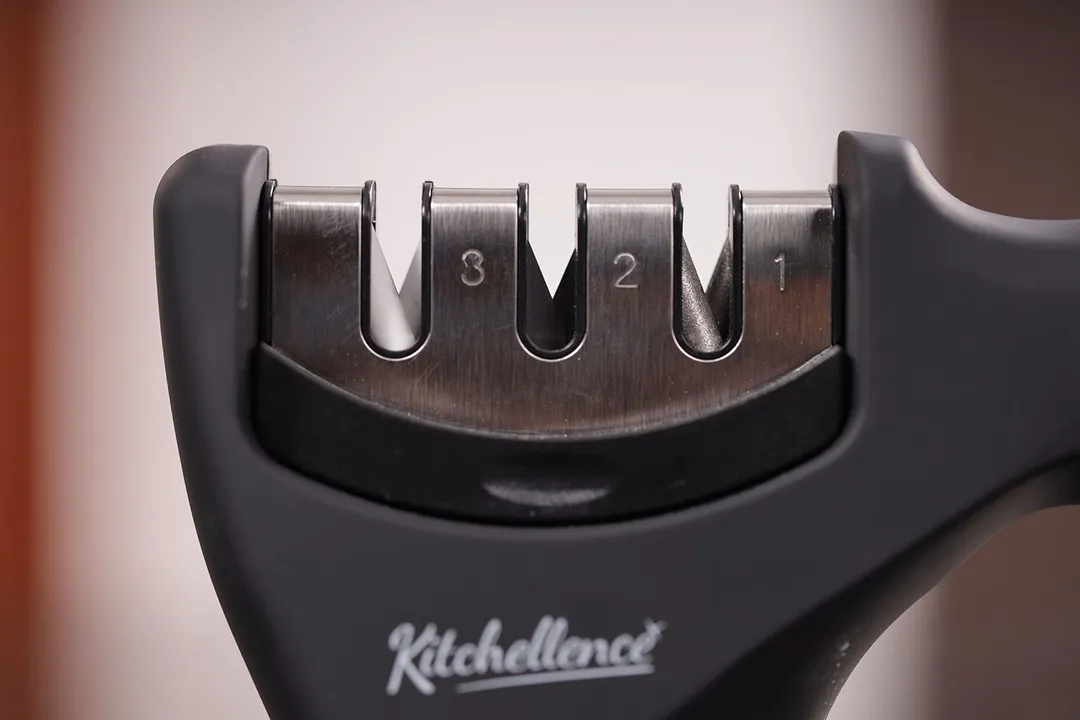
Base
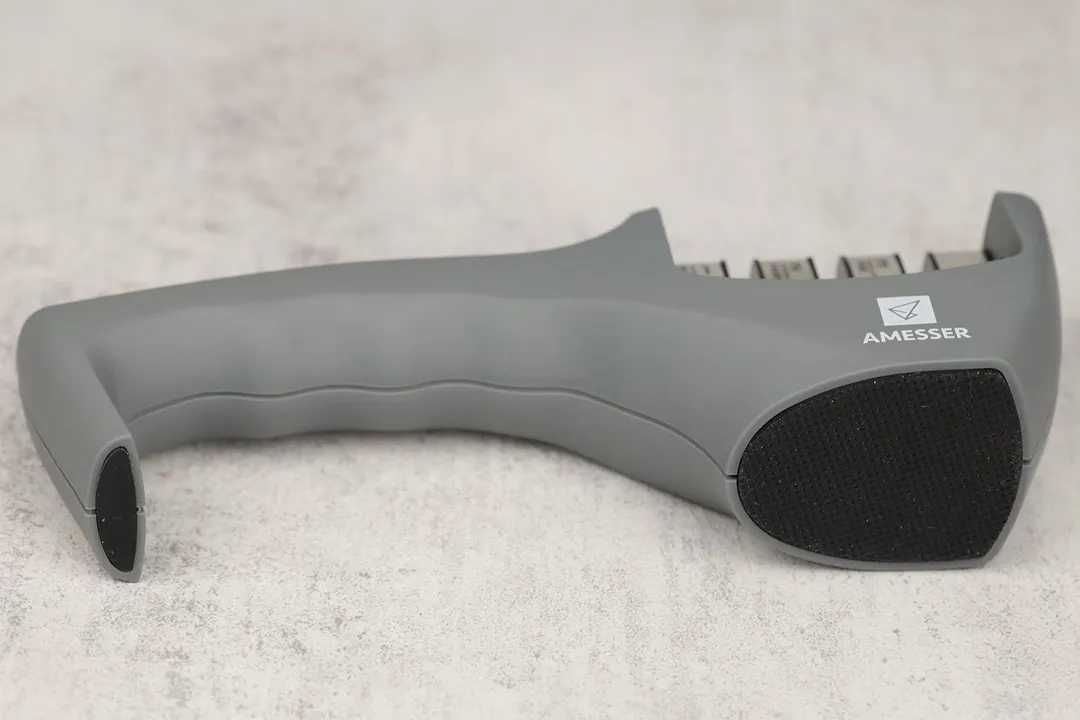
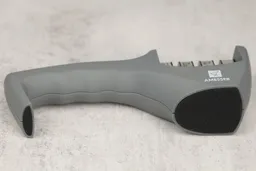

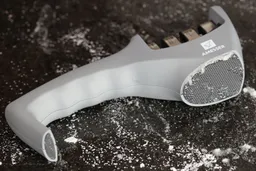
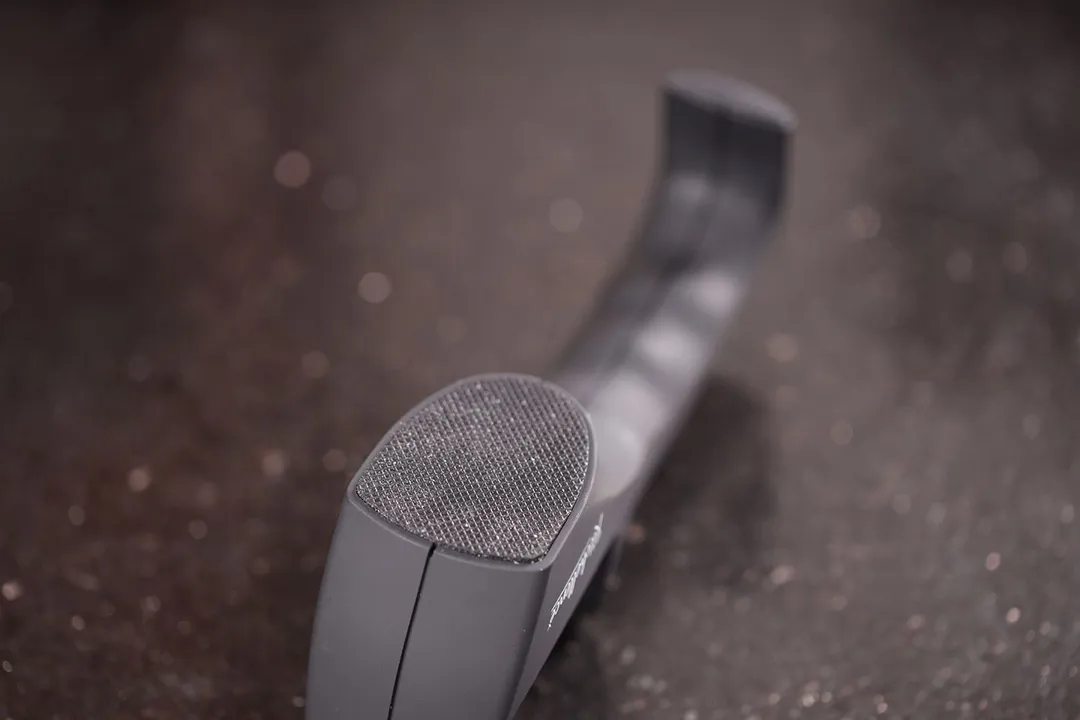
Grip

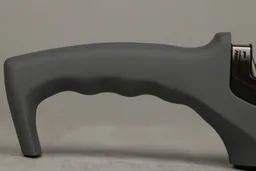


Usability
Slot Arrangement
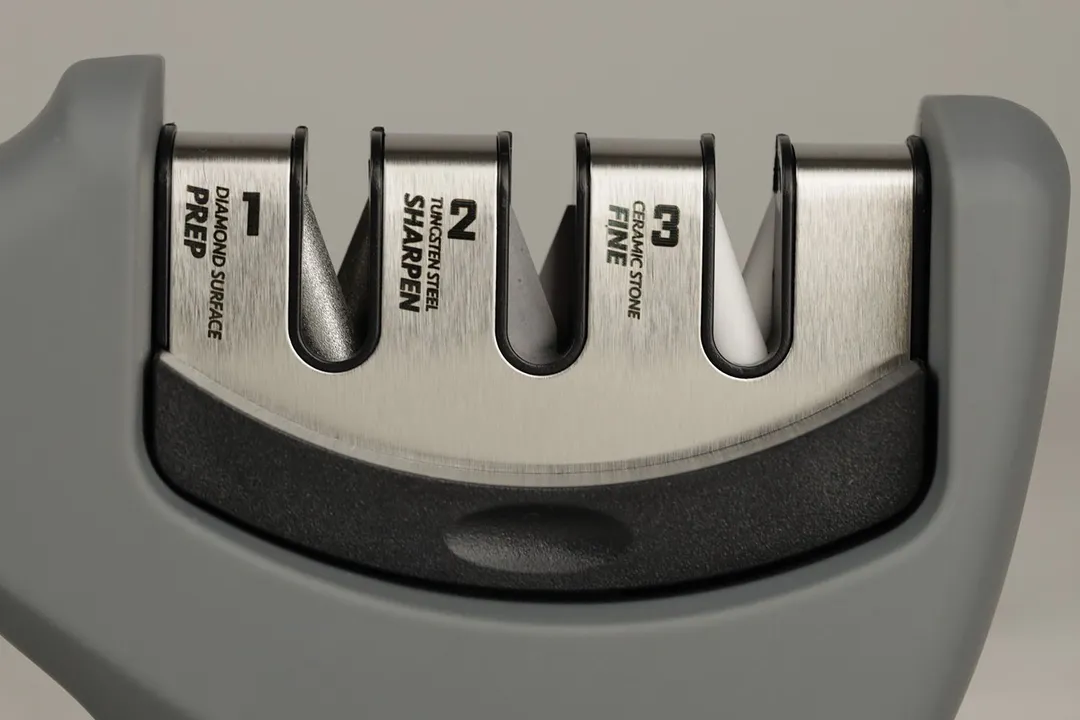

Insertion
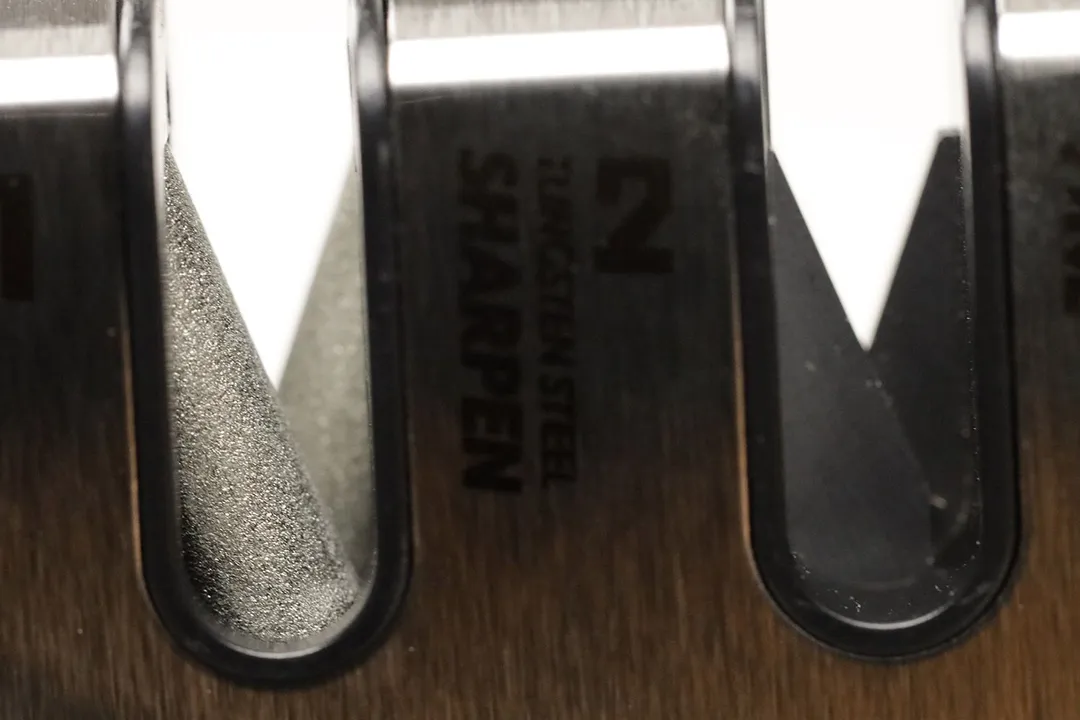
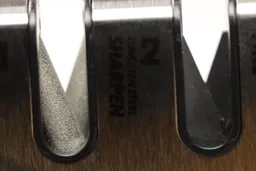
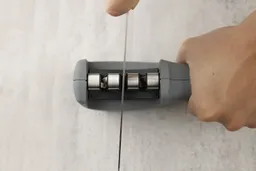
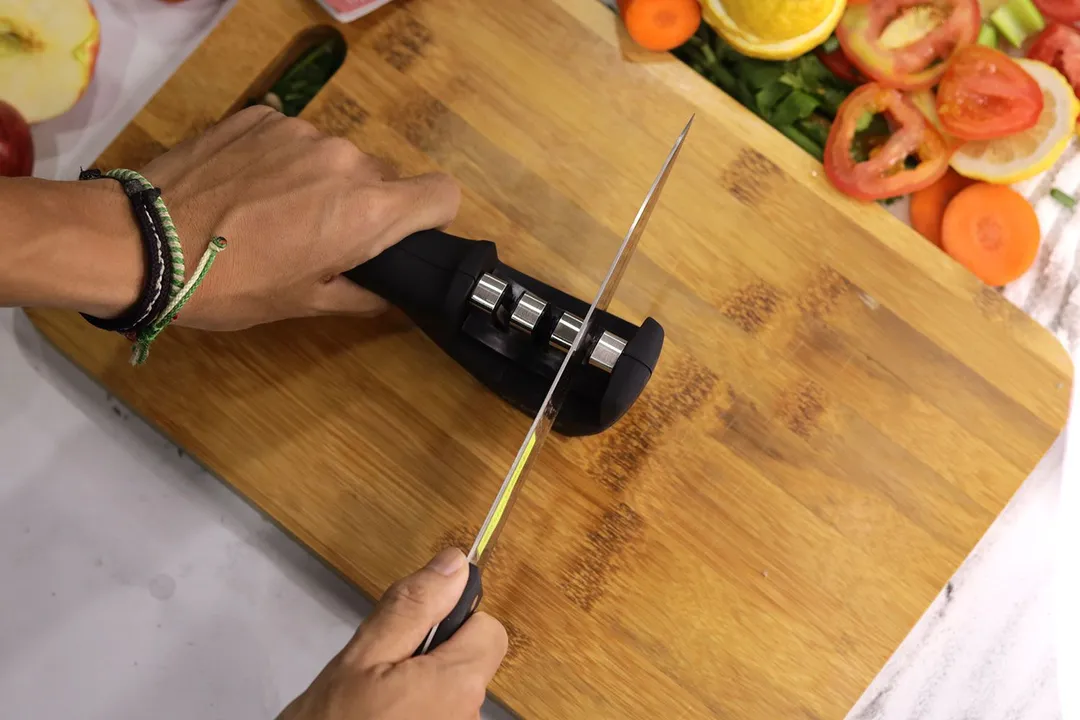
Pulling Through
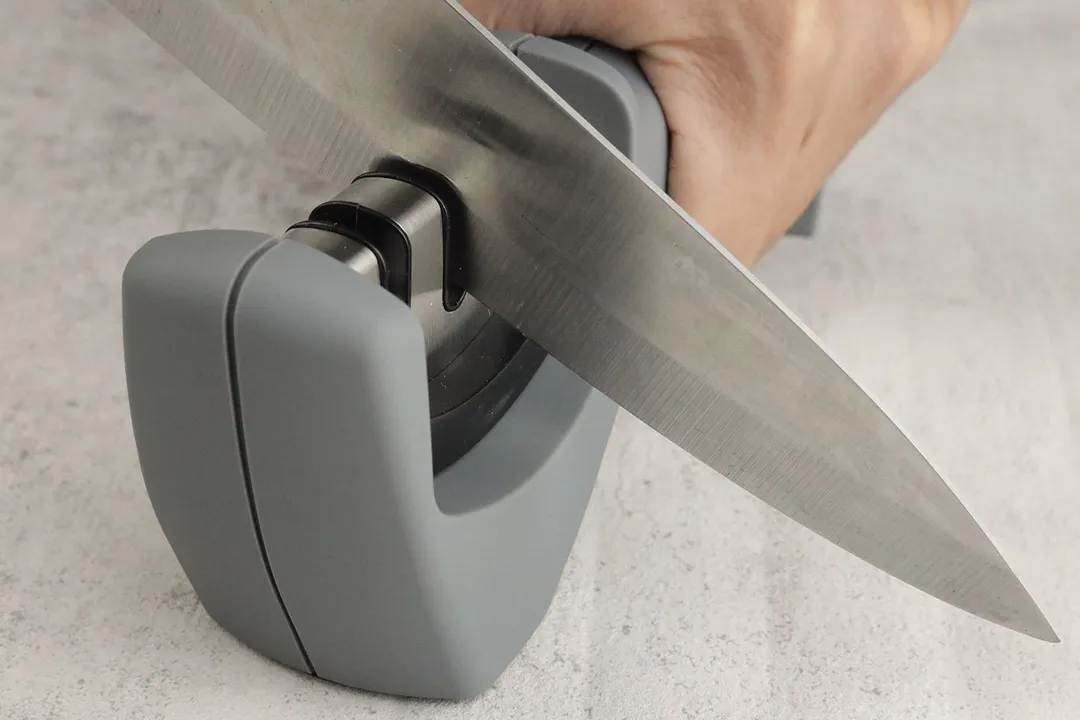
Stability on a Clean Surface
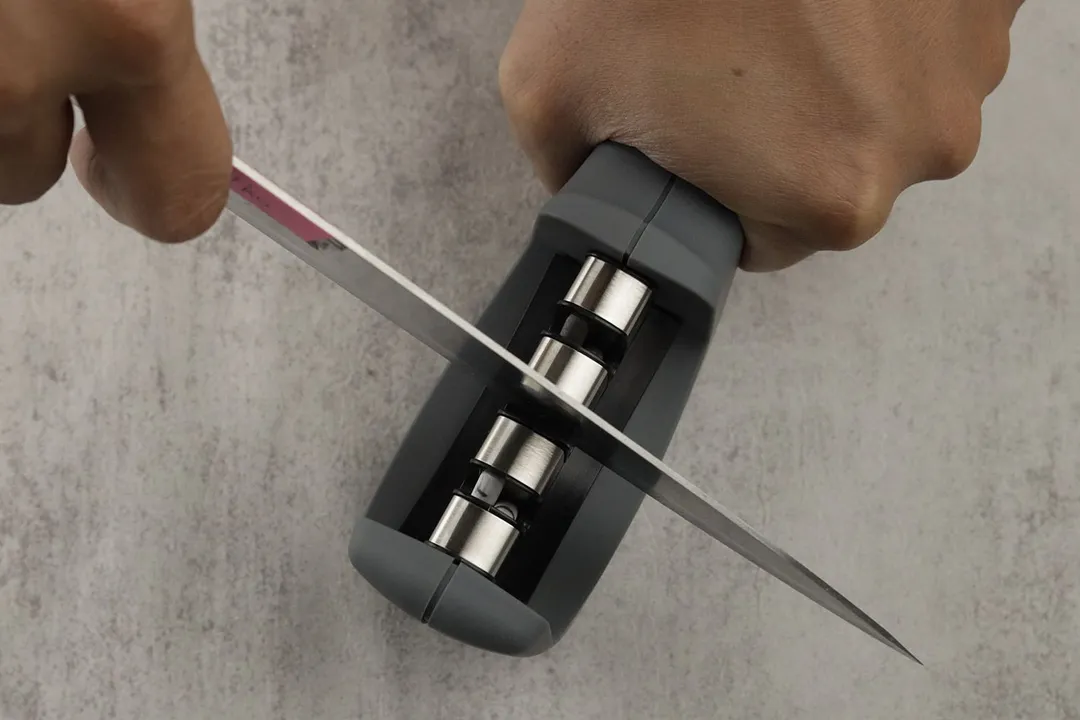

Stability on a Wet and Dirty Surface


Behind the Comparison
Anh Ngo is a writer with 9 years experience at different media outlets, covering from public news and events to product testing and analysis. At HealthyKitchen101, she works across different departments, communicating closely with its network of writers, editors, and health, tech, and search engine experts to provide a meaningful and pleasant reading experience for visitors.
Lap is Head of the Research, Testing, and Review Team (RTR Team) at HealthyKitchen101.com, where he directs and supervises the testing of kitchen gadgets and appliances.
Nguyen Ntk is a graphic designer, photographer, and videographer whose philosophy centers around respecting and celebrating the beauty of reality. Through his lenses, Nguyen strives to capture the true essence of objects and events, showcasing and highlighting authentic features without distortion or exaggeration.



